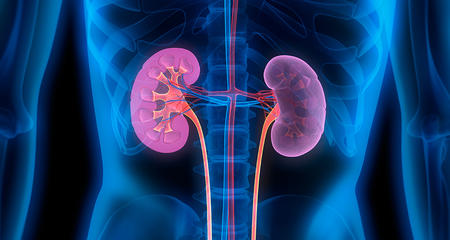Endocrinologists, surgeons and other team members provide the most advanced treatments available for the treatment of pituitary disorders. Treatment is based on each patient’s unique needs, including co-existing conditions such as cancer or pregnancy. We discuss all options with patients as we develop the treatment plan, and we monitor treatment progress along the way in order to make any adjustments that may be needed.
Hormone Replacement and Medication
Hormonal therapy and medication aimed at restoring hormonal balance may be recommended for patients with pituitary disorders.
Treatments may include pituitary hormone replacement, in which hormones are given to replace hormones not being produced by the pituitary gland. These include cortisol, thyroid hormone, vasopressin, sex hormones and growth hormone.
For some patients, medications may be prescribed to treat a particular tumor type, including:
- Dopamine agonist therapy, to treat prolactin-secreting pituitary tumors and some growth-hormone-secreting pituitary tumors.
- Somatostatin/octreotide therapy, for the treatment of acromegaly (excessive growth due to over-production of growth hormone by the pituitary gland).
- Pegvisomant, another medication used to treat acromegaly.
Surgery for Pituitary Disorders
In some cases, surgery is the best option for treatment. The goal is to achieve the best treatment results while preserving gland function. Surgery may be recommended to remove hormone-producing tissue, typically in patients with acromegaly (marked by excessive growth hormone production) or Cushing’s disease (elevated cortisol level). Surgery may also be used to decrease the size of a tumor or to remove non-hormone-producing tissue that may threaten surrounding structures in the future.
Endonasal Transsphenoidal Endoscopic Surgery
Endonasal transsphenoidal endoscopy, a highly specialized, minimally invasive pituitary surgery, is offered in southeastern Wisconsin by Froedtert & MCW neurosurgeons and specialized otolaryngologists. This advanced surgical technique offers many advantages over the traditional method of removing tumors.
During the procedure, physicians use a sophisticated device called an endoscope, a thin, flexible tube with a light and video camera on the tip. The endoscope is placed in the nose and moved to the tumor site so physicians can see and remove or reduce tumors. The method results in minimal blood loss and reduces post-operative pain and possible complications for patients.
Radiation Therapy
Gamma Knife therapy is a procedure for delivering a single focused radiation therapy to select pituitary tumors.
External radiation therapy is also used to deliver radiation therapy to pituitary tumors but is done in multiple small fractions over 6 weeks.
Blogs, Patient Stories, Videos and Classes





